Daffodils are a classic flower, instantly recognizable by their bright color and quintessential shape. Even non-gardeners can conjure up the image of an iconic yellow trumpet when they hear the word “daffodil”.
However, it doesn’t take much digging to realize that the solid yellow trumpet is just the tip of the daffodil iceberg! There are roughly 32,000 registered daffodil cultivars, although only about 10% of them are commercially available for gardeners.
There are thousands of unusual daffodil varieties, featuring just about every combination of shape, color, and size. From double-flowering to split coronas, and from peachy pinks to green (yes, green!) petals, there is an astonishing amount of variation sprouting from this simple bulb.
Read on and check out some of these lesser-known daffs!
‘Albatross’
‘Albatross’ is an heirloom variety in every sense; this daffodil has been around since the 1890’s! This unusual daffodil features a frilled, orange-dipped central cup surrounded by propeller-like outer petals. Instead of overlapping, the outer petals are slightly gapped. ‘Albatross’ is a relatively tall variety, standing 18-20 inches high, and would be well-suited as a cut flower or planted in the middle of a mixed garden bed. This daffodil blooms in mid to late spring.
‘Apricot Whirl’
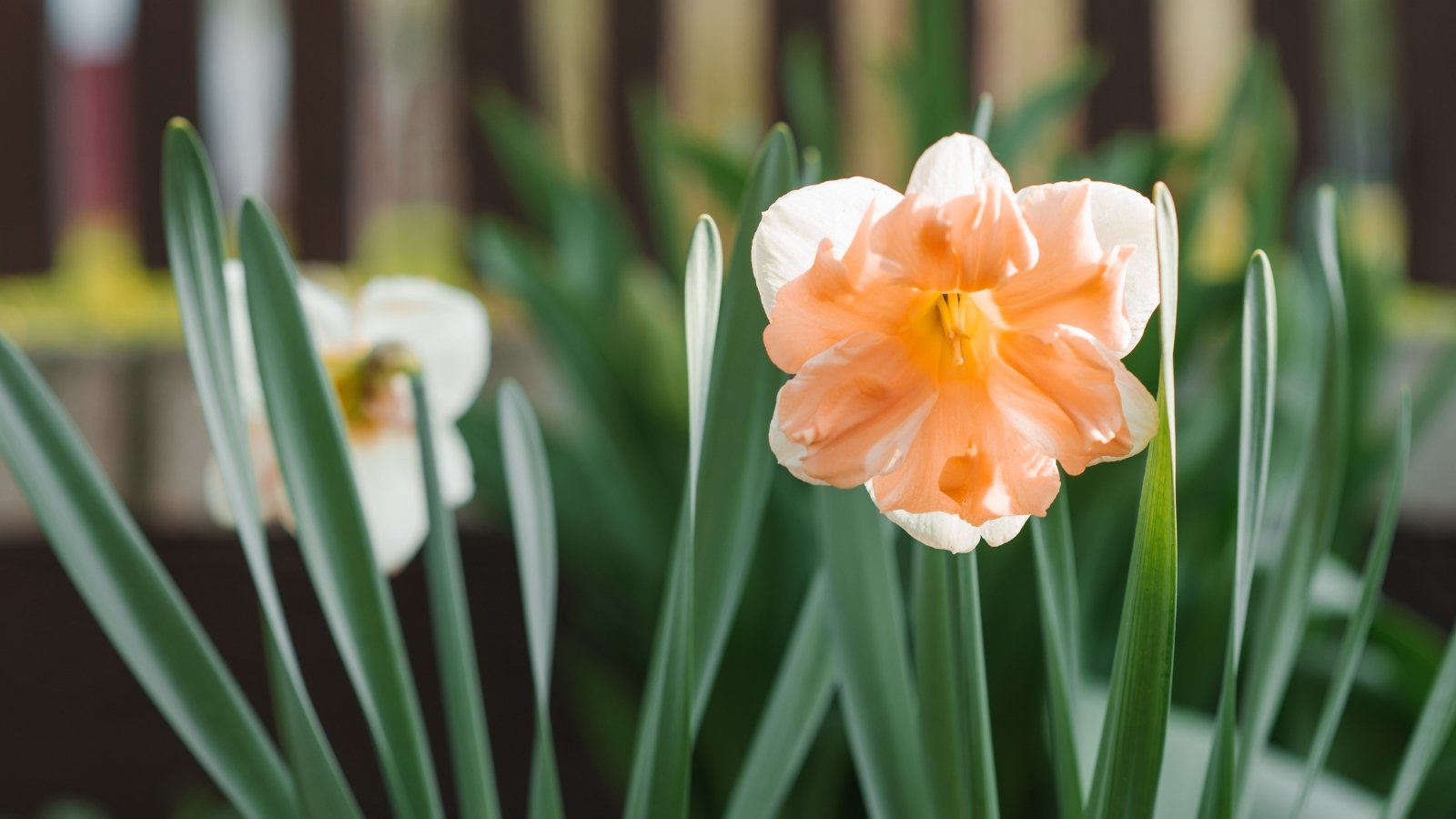
‘Apricot Whirl’ features a deeply ruffled center in shades of warm peach and coral, surrounded by creamy white outer petals. ‘Apricot Whirl’ is considered a butterfly or split corona type of daffodil, meaning the center cup (corona) is split more than half its length.
The large, 3-4-inch wide blooms open in mid spring. Mix ‘Apricot Whirl’ with other peachy-hued daffodil varieties like ‘Bellabombe’, described below, for beautiful spring bouquets and arrangements.
‘Boaz’
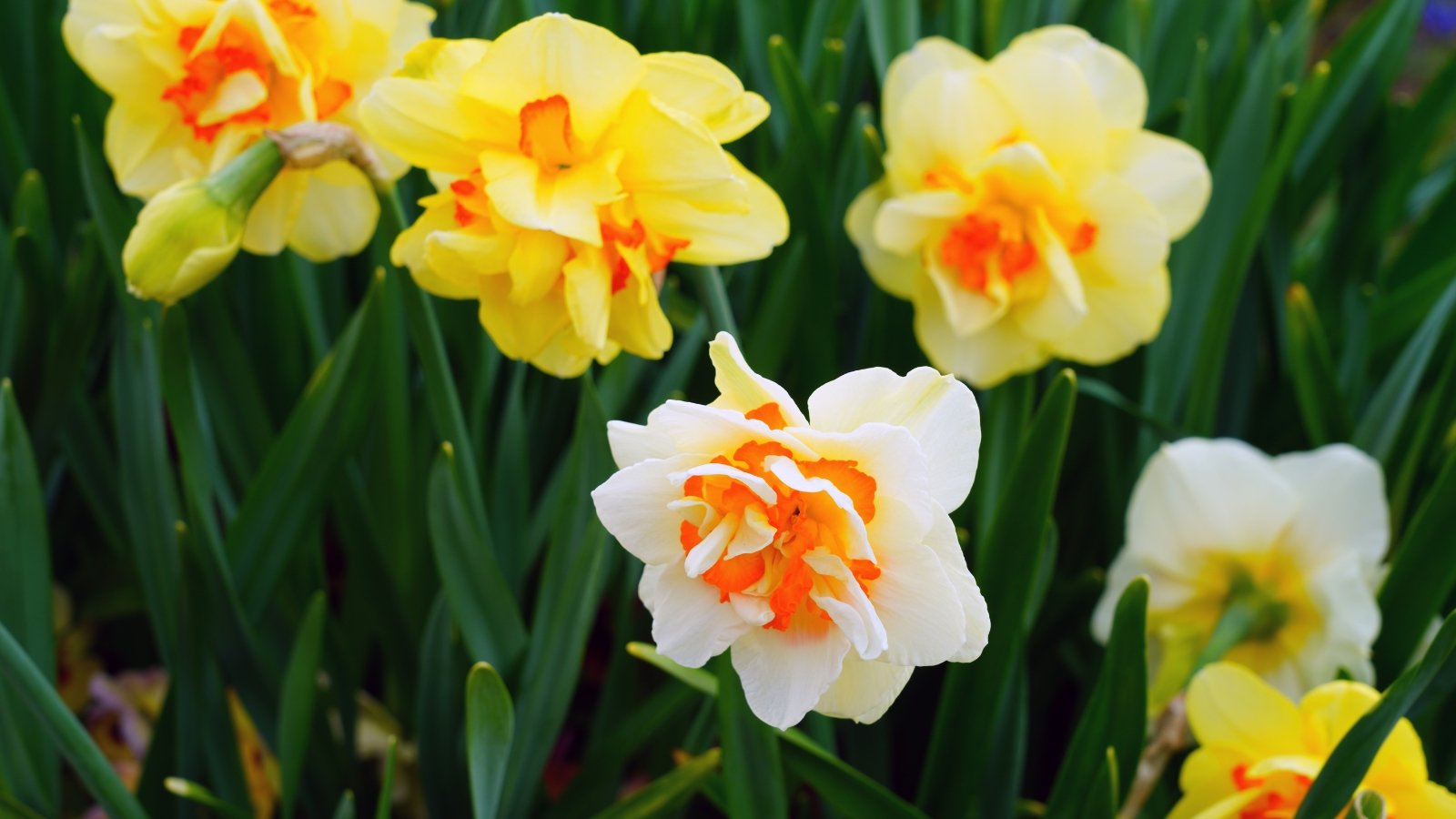
Rarely is a daffodil variety listed as “orange” so, well, ORANGE. ‘Boaz’ has yellow-orange outer petals surrounding a bold, copper orange center. This double-flowering variety has layers of petals that make up 4-inch wide blooms. ‘Boaz’ blooms in mid spring and typically stands around 18 inches tall. Plant it with equally vivid orange varieties of tulip, like ‘King’s Orange’ or ‘Daydream’.
‘Can Can Girl’
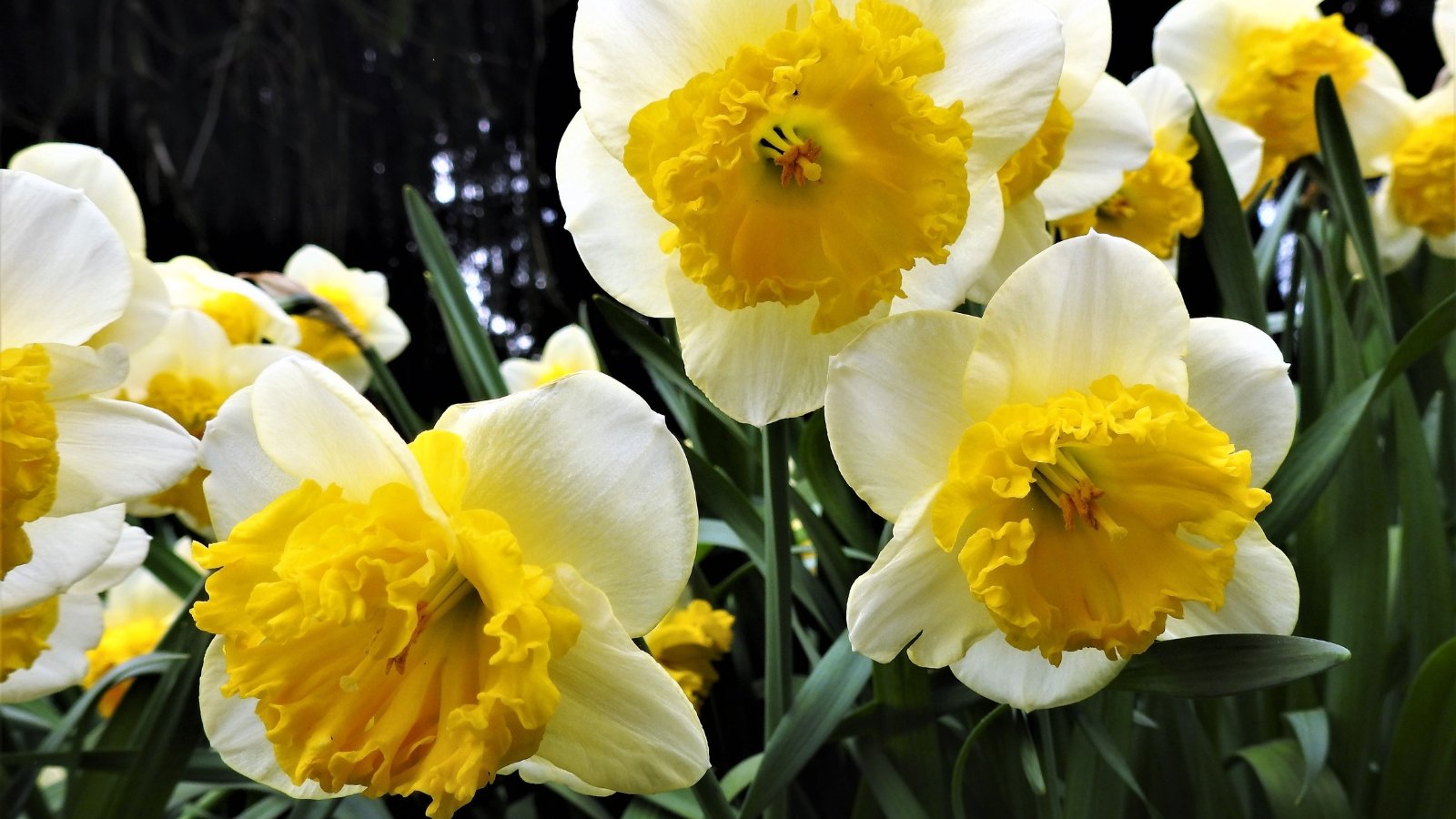
With its golden, ruffled center reminiscent of a majestic lion’s mane, ‘Can Can Girl’ is a definite showstopper. This large-cupped variety has smooth white outer petals surrounding a yellow, heavily frilled, ring-like center.
‘Can Can Girl’ is an excellent cut flower, as it retains its golden yellow ruffles even after the outer white petals have faded and dropped. This daffodil stands 14-18 inches tall and blooms in mid spring.
‘Chromacolor’
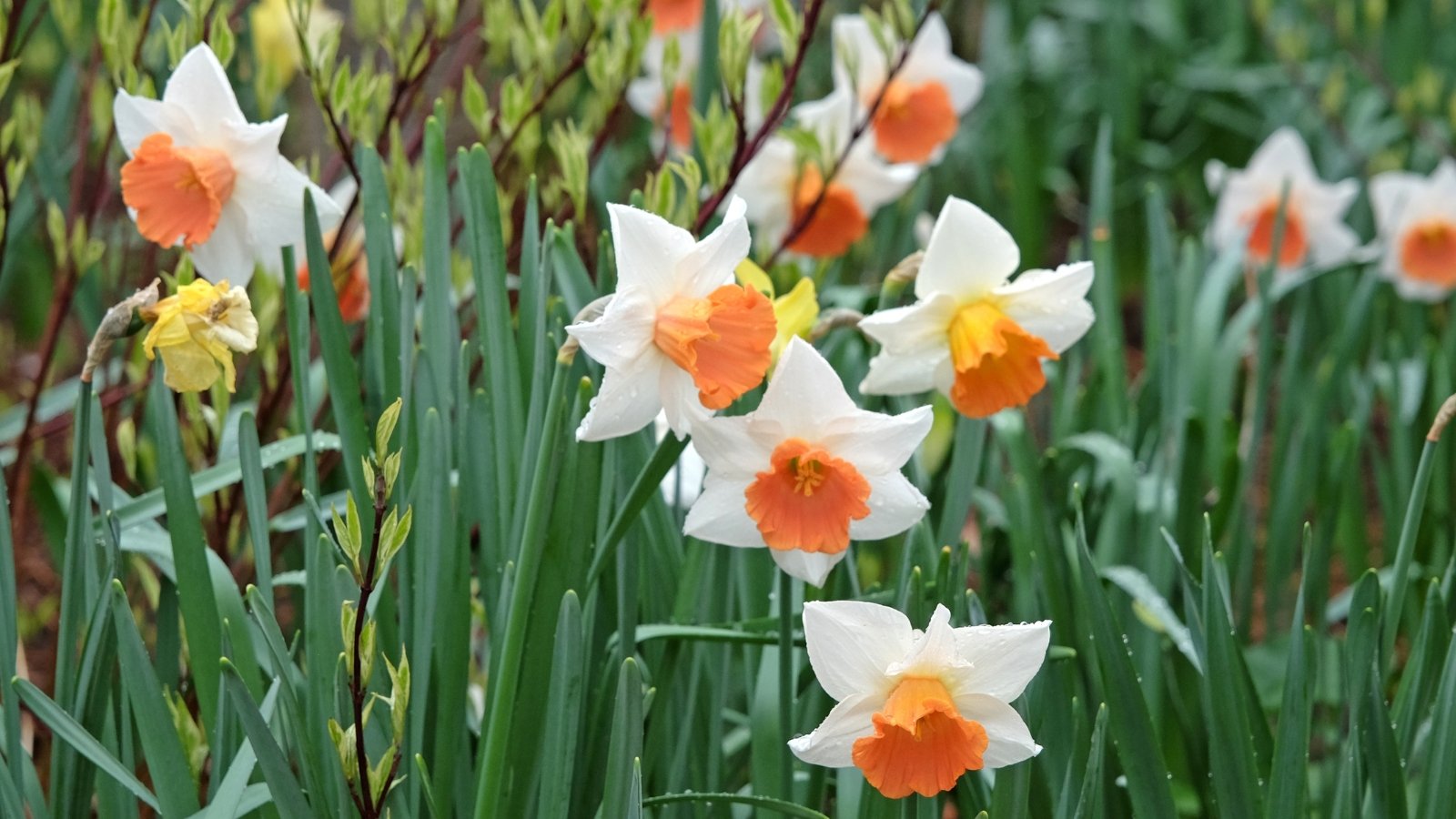
A daffodil worthy of its name! The large-cupped ‘Chromacolor’ boasts huge, 5-inch wide blooms. Outer petals are bright white and the inner cups are an iridescent, coral pink. A fantastic cut flower, this gorgeous variety is ideal for spring bouquets and arrangements. As with other pink daffodils, ‘Chromacolor’ benefits from partial shade to help develop its coloration — direct, full sun can bleach pink hues.
‘Firebrand’
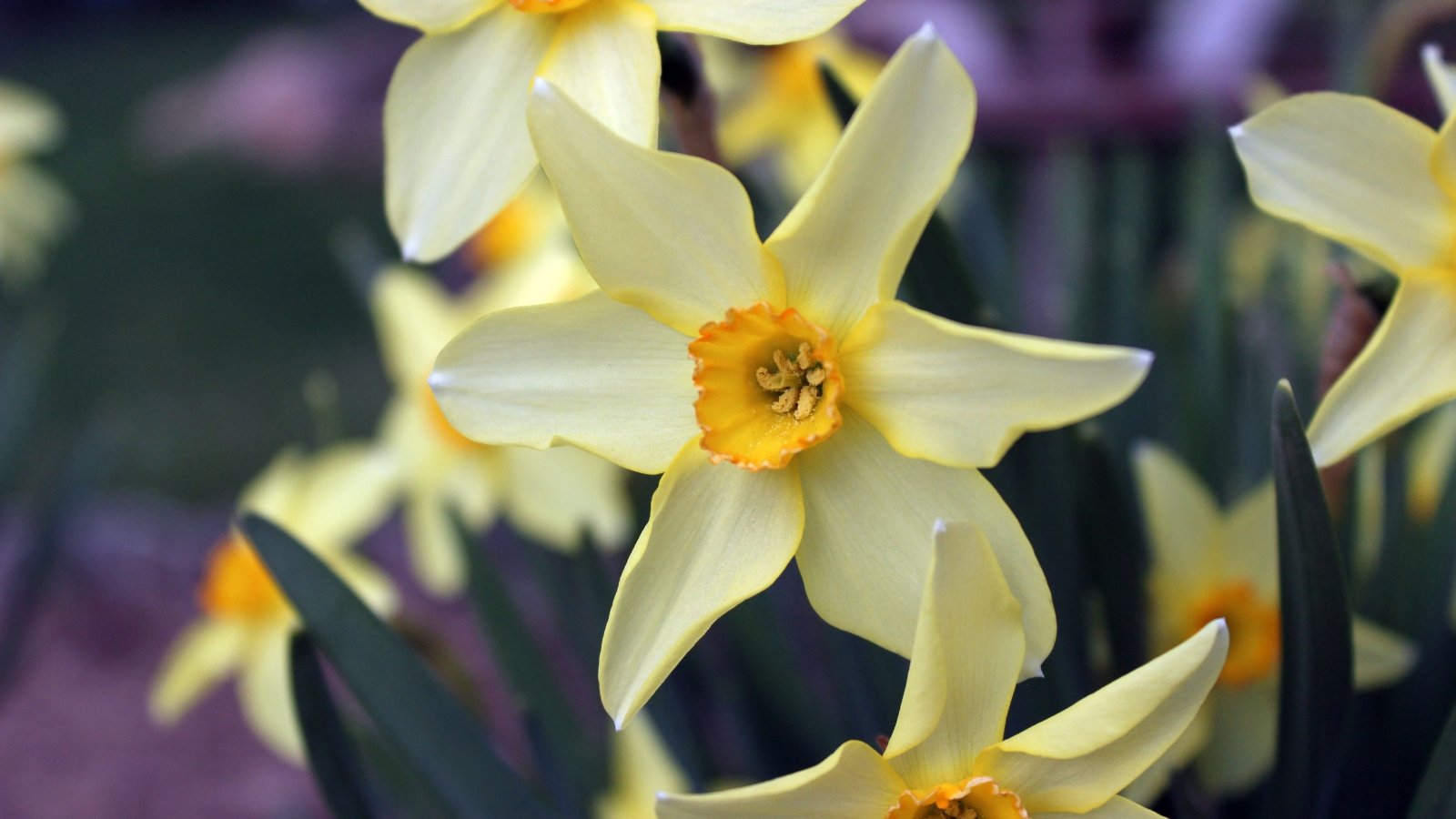
The unique and elegant star-like blooms of ‘Firebrand’ feature six slender, ivory white petals that surround a bright orange center cup. ‘Firebrand’ is a rare heirloom variety standing 18-20 inches tall. This variety blooms in in early to mid spring. Try pairing it with other early bloomers like Glory-of-the-snow or crocuses.
‘Irene Copeland’
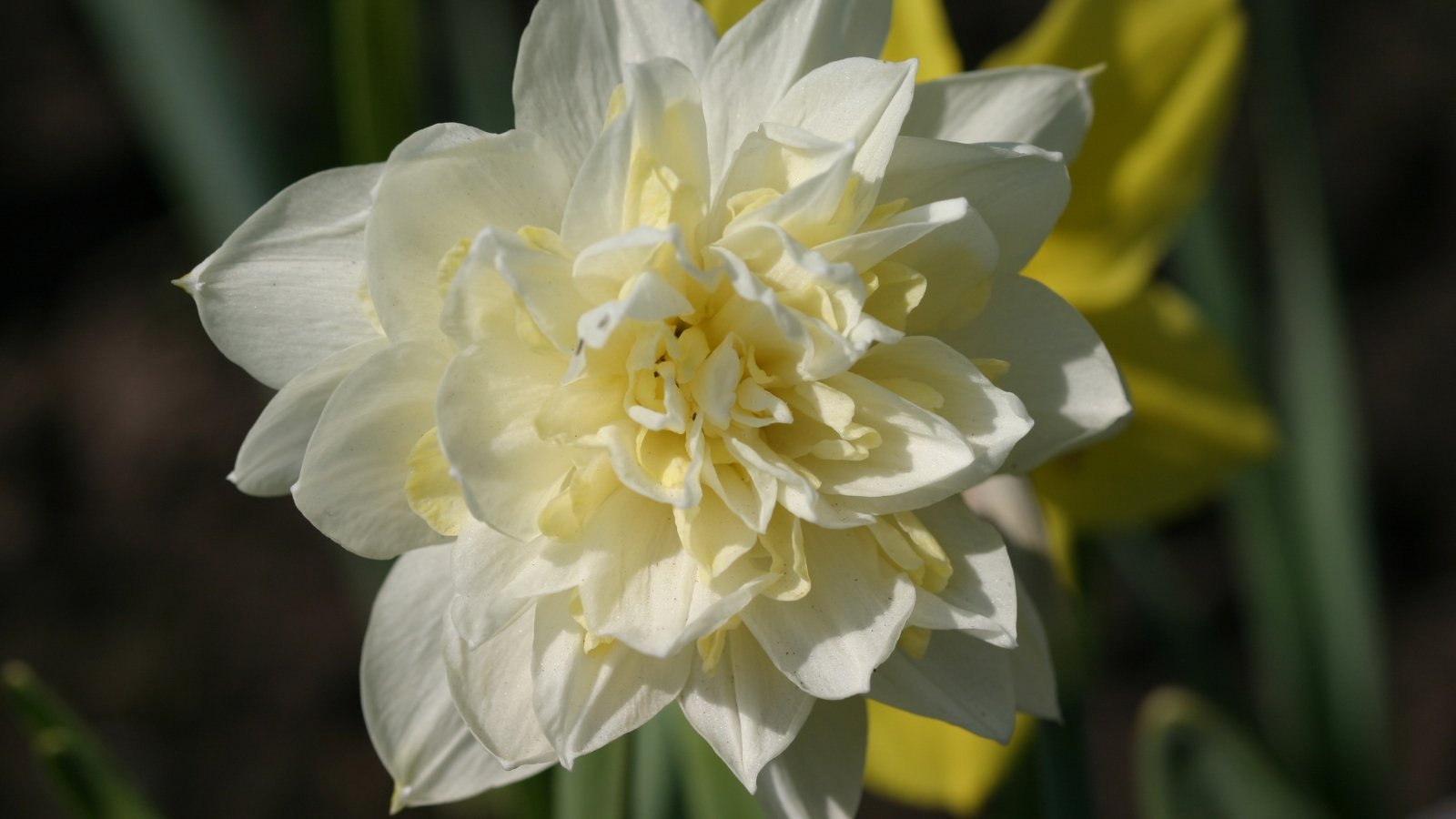
‘Irene Copeland’ features luxuriant 3.5-inch wide blooms that almost look like prized peonies. This double-flowering variety stands 14-18 inches tall and blooms in mid spring. Alternating layers of ivory and lemon yellow petals make this variety a must-have for spring floral arrangements and bouquets.
‘Itzim’
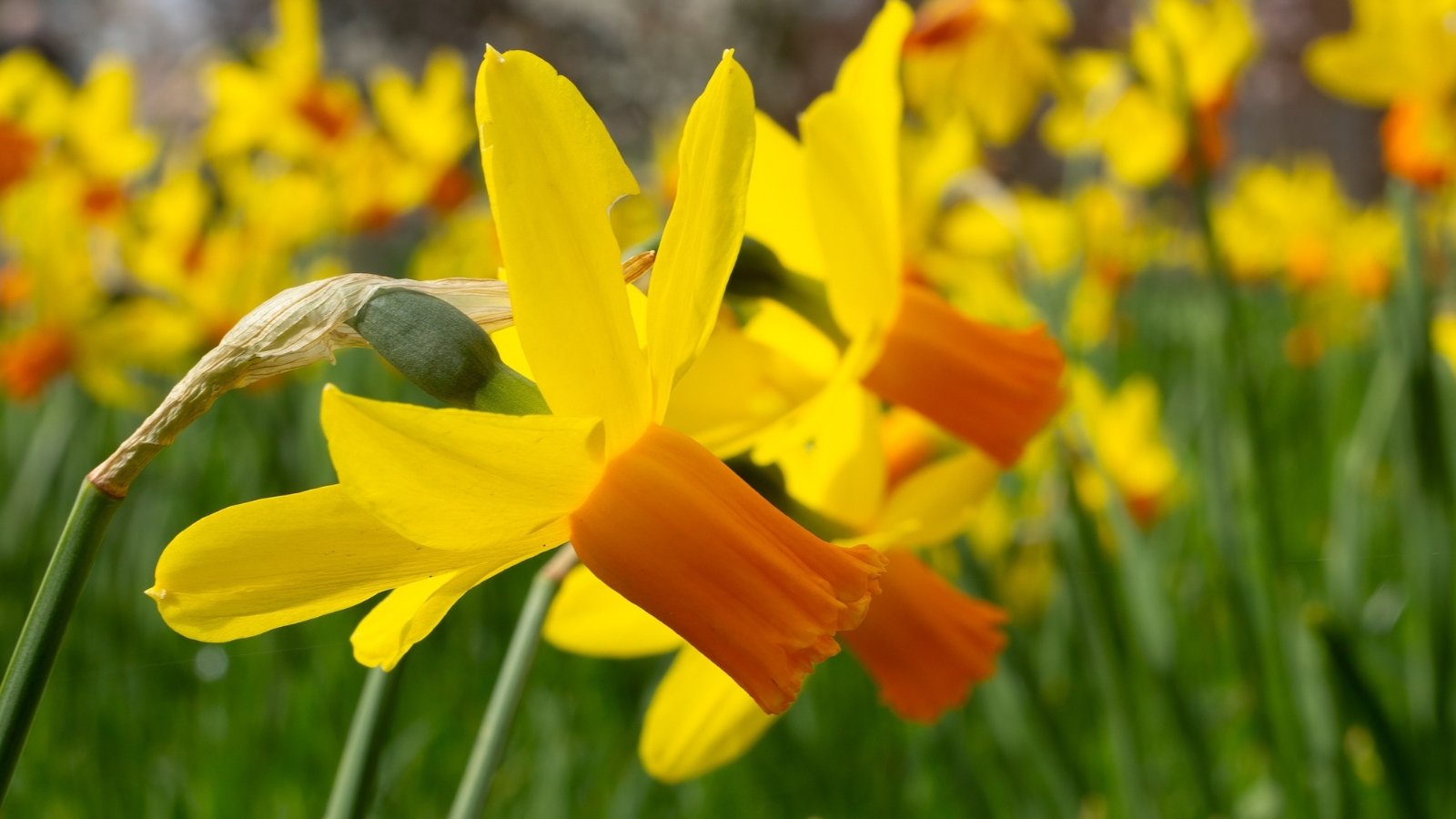
‘Itzim’ is a cyclamineus daffodil, which are known for their swept-back, downward facing flowers that form acute angles with the stem. Cyclamineus daffodils can tolerate shady locations and heavier soil better than most other varieties. ‘Itzim’ has long, golden, trumpet-like cups surrounded by bright canary-yellow outer petals.
‘Itzim’ is on the small end of daffodils, standing just 8-12 inches tall. Its smaller stature makes this an exceptional variety for planters and containers. Blooming in early spring, ‘Itzim’ would pair well with other early spring bulbs like purple and yellow crocuses.
‘Jayne Mansfield’
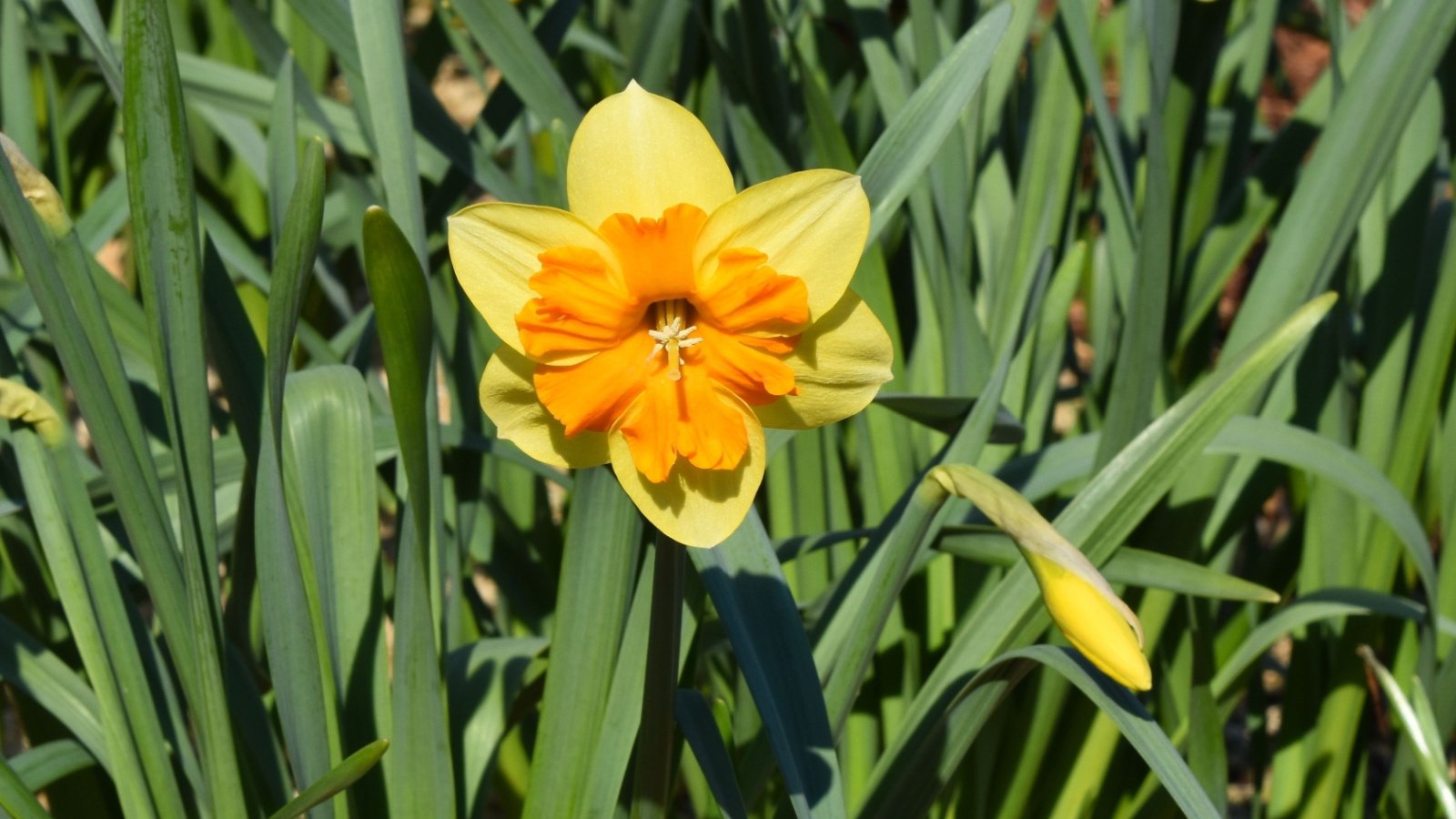
Aptly named after an icon of the Hollywood Golden Age, ‘Jayne Mansfield’ is a stunning split-corona type daffodil. Warm, buttery yellow outer petals surround swept-back, pale peach inner ones. Both inner and outer petals darken as the blooms age. The inner petals are slightly wavy, adding texture to an already beautiful, unique flower. ‘Jayne Mansfield’ blooms in mid spring. Plant these bulbs in drifts close to pathways and along border edges so their two-toned blooms can be admired up close!
‘Julia Jane’
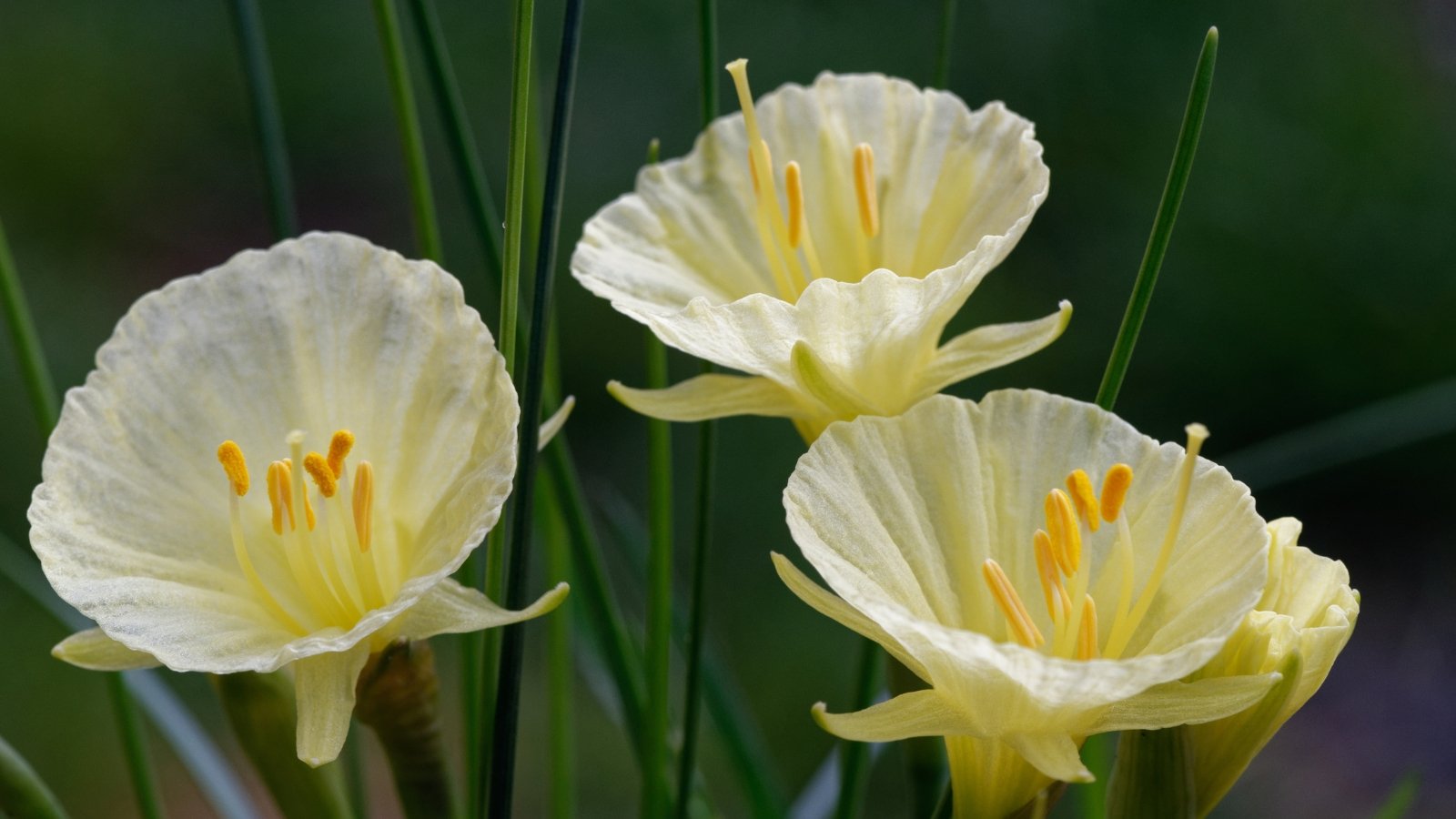
‘Julia Jane’ is a type of Narcissus romieuxii, which are commonly called “petticoat daffodils” in reference to their sweeping, hoopskirt-shaped flowers. Native to the mountains of northern Africa, these unusual daffodils are perfect for alpine rock gardens, meadows, naturalizing, and even containers. In their native habitat, N. romieuxii prefers dry conditions and sharply-drained soil.
‘Julia Jane’ has paper-thin petals in pale lemony yellow, and slender, grass-like foliage in dark green. This enchanting daffodil pairs well with other petite spring flowering bulbs like crocuses and grape hyacinth.
‘Pink Parasol’
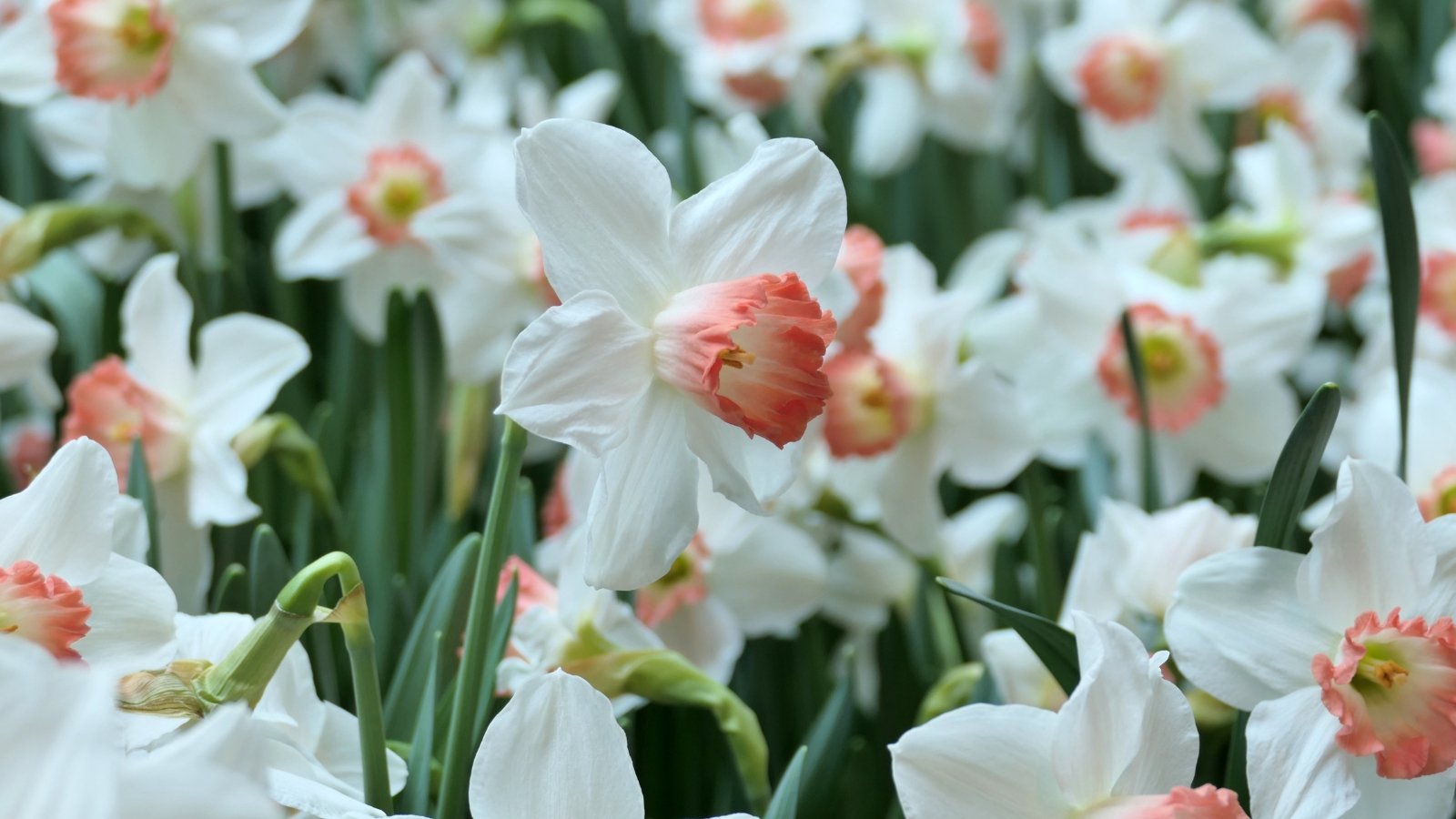
‘Pink Parasol’ features rosy-pink fluted centers surrounded by exquisite ivory petals. This romantic daffodil is lovely in floral arrangements and mixed garden beds. Pair with equally elegant pale pink tulips, like ‘Menton’ or ‘Angelique’. ‘Pink Parasol’ blooms in mid to late spring.
Temperature can impact just how “pink” the central cup can appear. Gardeners in warmer climates may see deeper pink hues, while daffodils planted in cooler climates may appear more coral-orange.
‘Polar Hunter’
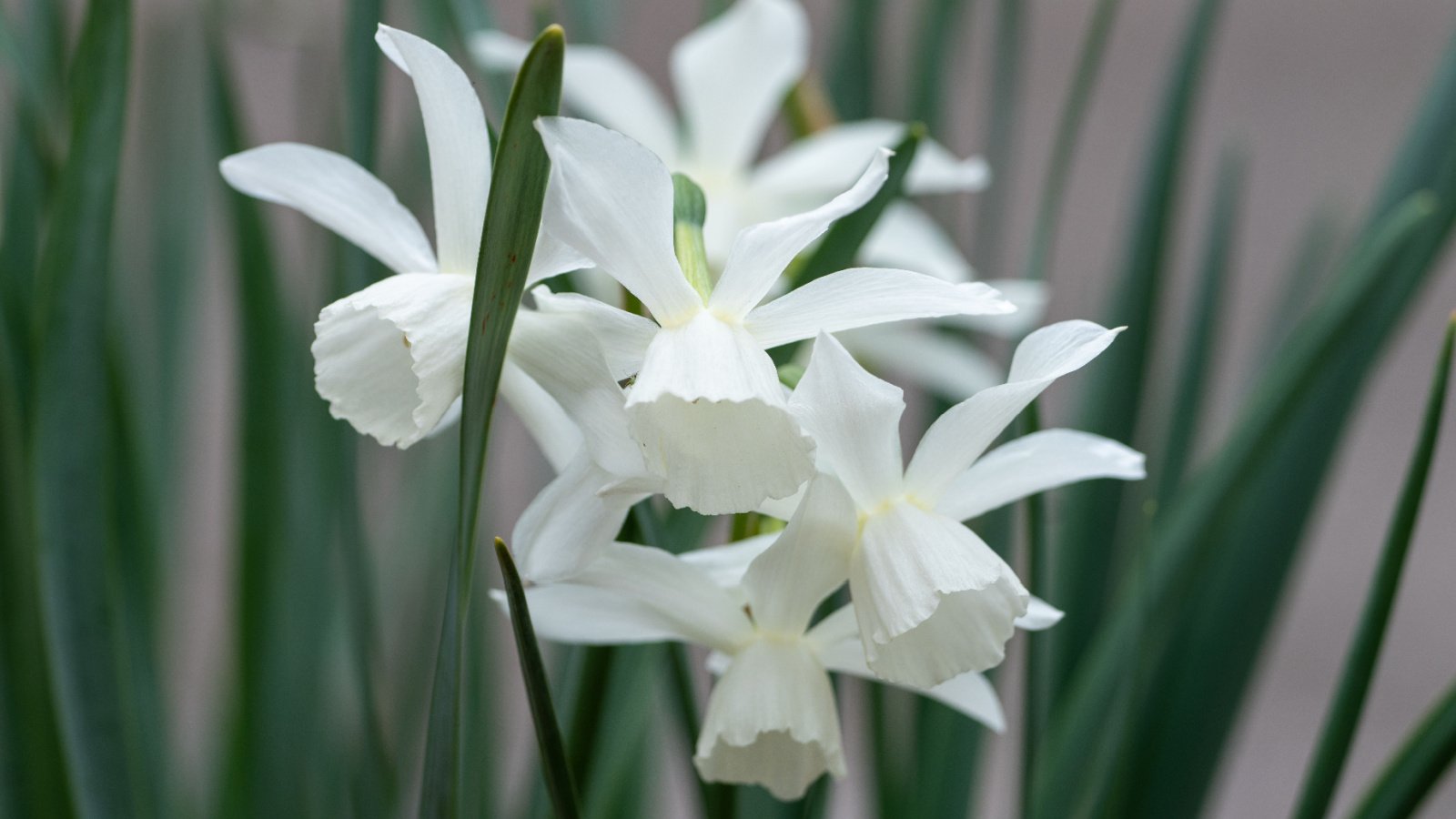
This gorgeous daffodil is the result of crossbreeding spring-flowering N. jonquilla with fall-flowering N. viridiflorus. Blooms open bright chartreuse, then slowly mature to nearly white. Each stem yields up to four flowers. When planted en masse, ‘Polar Hunter’ appears as a lush carpet of green and white.
While not as cold-hardy as most daffodil varieties, ‘Polar Hunter’s unusual coloration and tolerance of warm temperatures makes it perfect for southern gardens.
‘Pom Pom Rose’
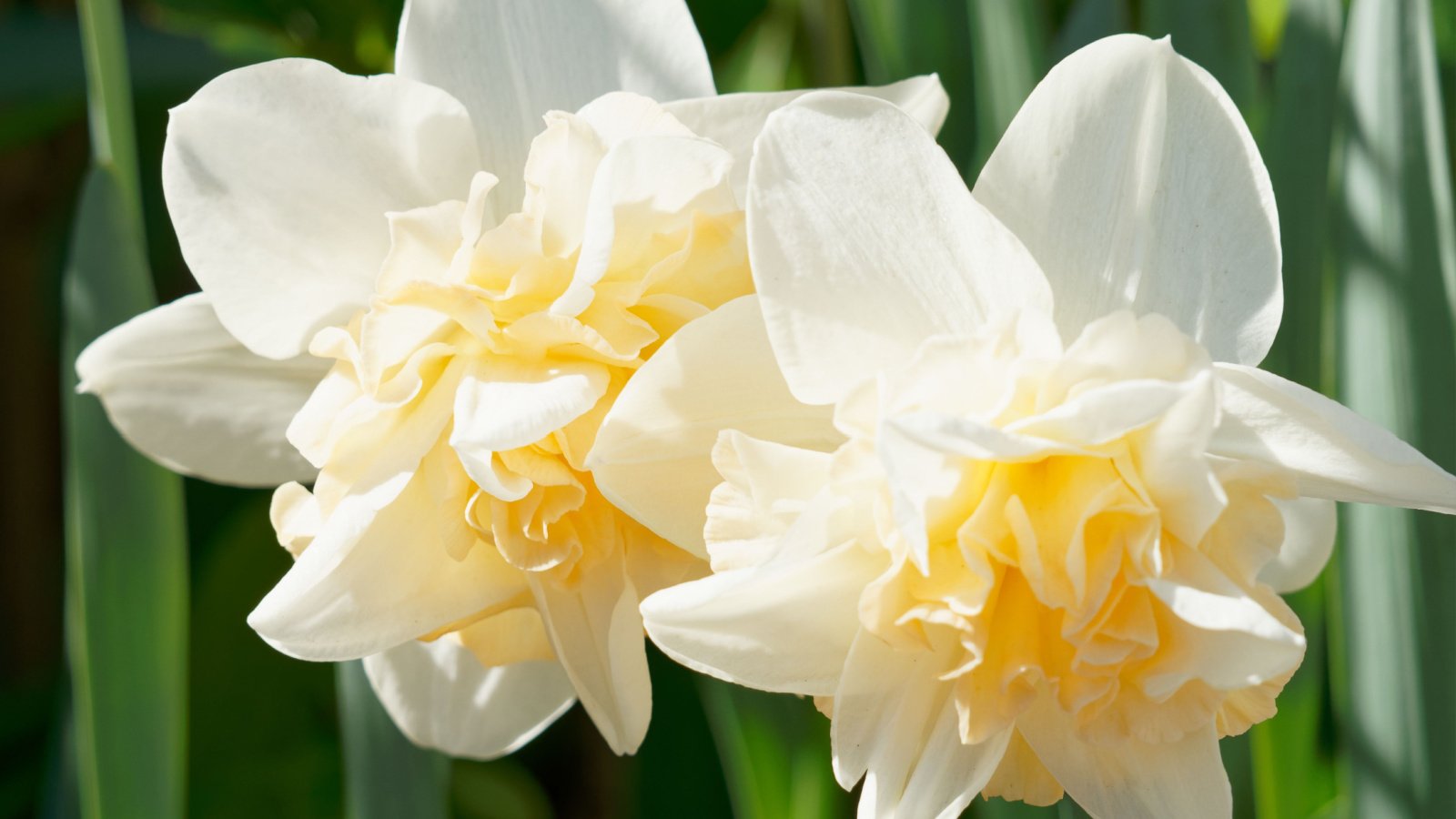
‘Pom Pom Rose’ doesn’t look anything like the traditional trumpet daffodils. This unique double-flowering daffodil has ruffled layers of peach and ivory, giving it a very lush, romantic vibe. The innermost petals usually have a faint touch of green. ‘Pom Pom Rose’ blooms in early to mid spring. Plant a batch of these bulbs with some tulips in planters, for an elegant spring container garden.
‘Rip Van Winkle’
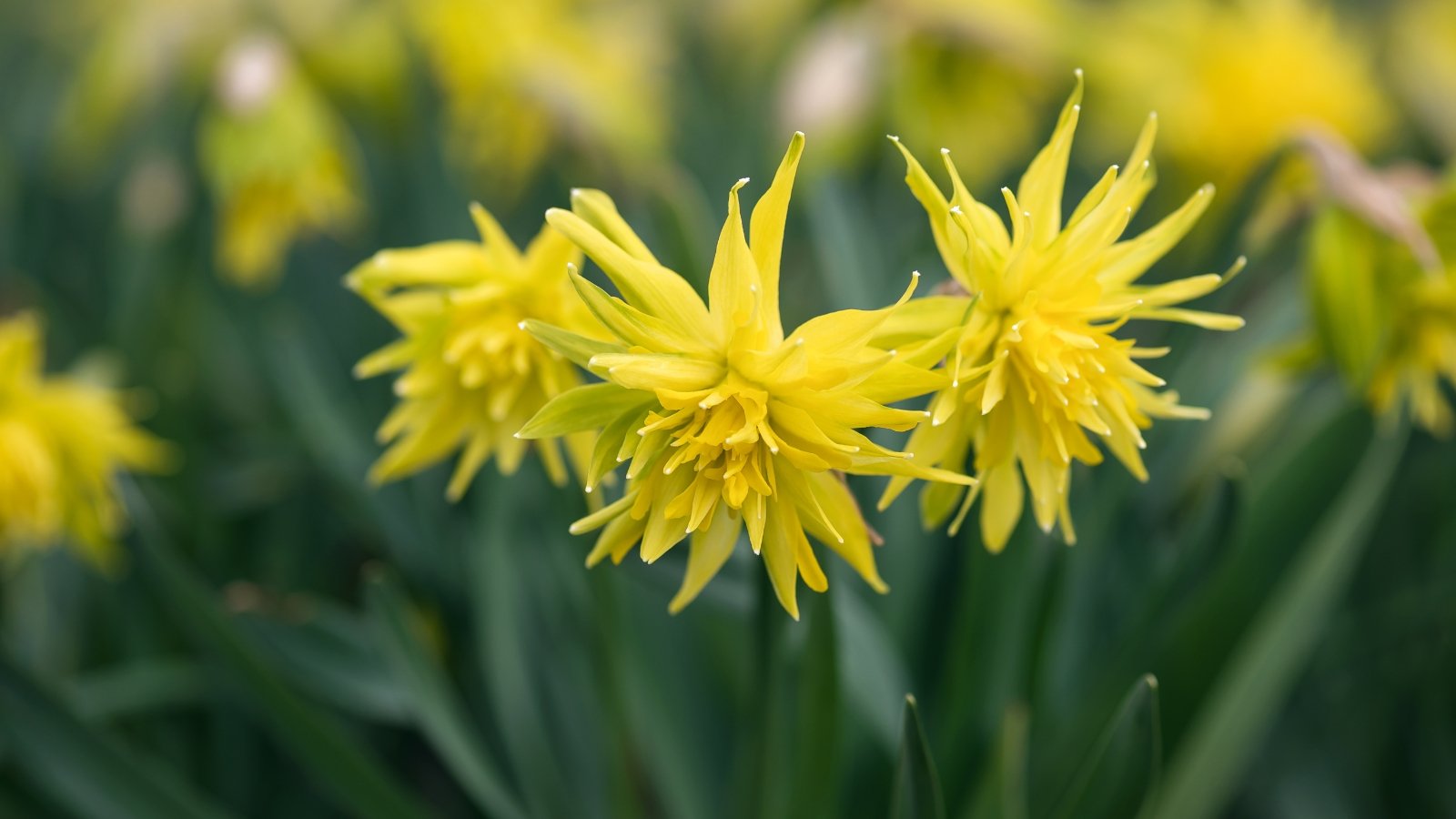
With its spiky, slightly twisted petals, ‘Rip Van Winkle’ looks more like a cactus dahlia than a daffodil. This heirloom variety has bright, sunshine yellow flowers. ‘Rip Van Winkle’ is also a double-flowering daffodil that opens in early spring.
Plant ‘Rip Van Winkle’ at the front of borders or in containers for the best and biggest impact. These petite beauties stand just 8-10 inches tall. Enjoying ‘Rip Van Winkle’ as a cut flower? For the best presentation, double-flowering daffodils should be picked when blooms are entirely open.
‘Sinopel’
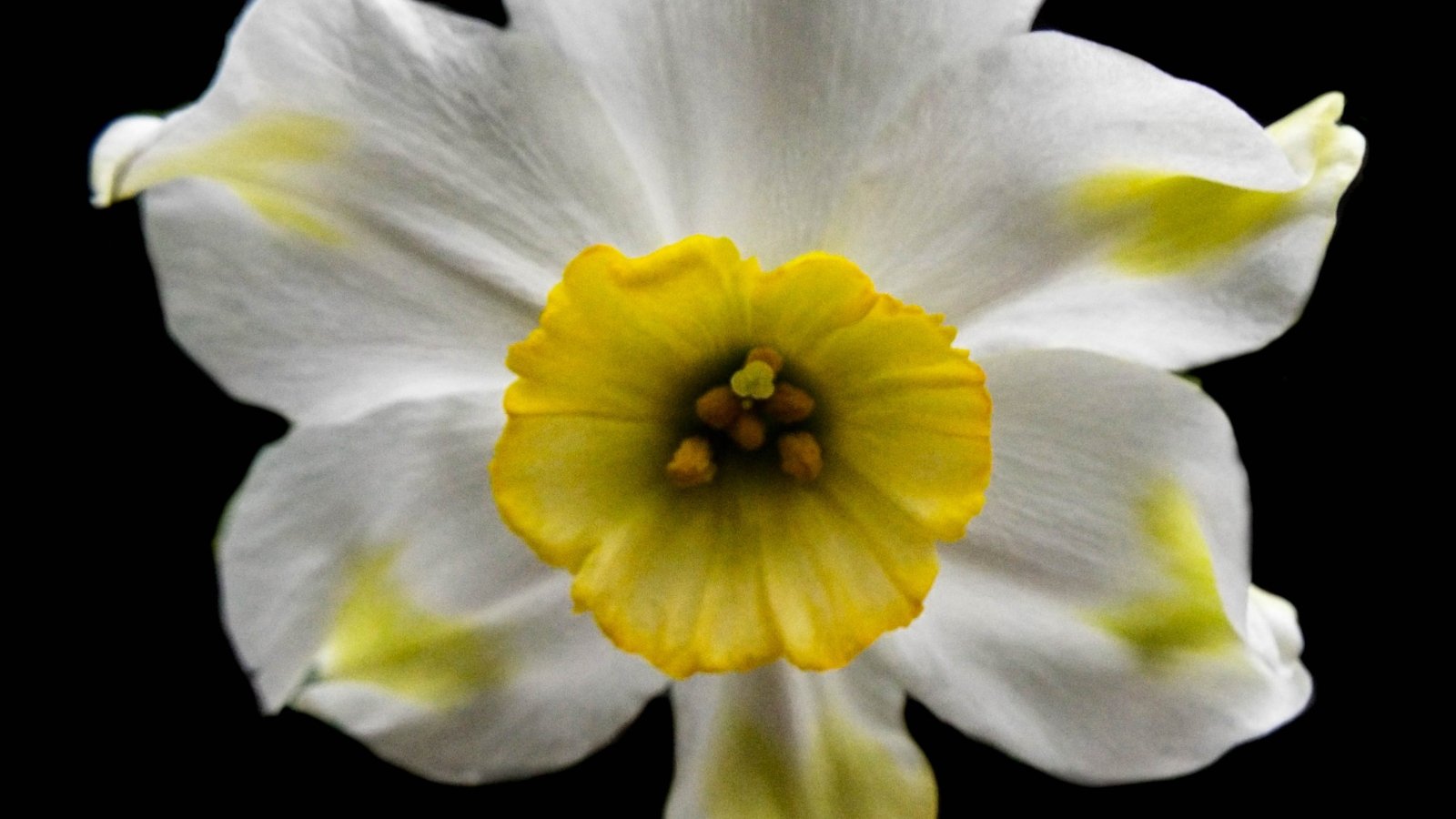
‘Sinopel’ might just be the weirdest and wildest daffodil on this list! Clean white outer petals surround a shallow central cup that ranges in color from yellow to lime green. Temperature can impact greenish-hued daffodils, including ‘Sinopel’. Warm spring temperatures deepen the green of the central cup, while cooler conditions amplify the pale yellow undertones.
‘Sinopel’ blooms in mid to late spring and is one of the last daffodils to open. Tuck a few of these bulbs in a moon garden, where they’ll complement other white and green annuals.
‘Thalia’
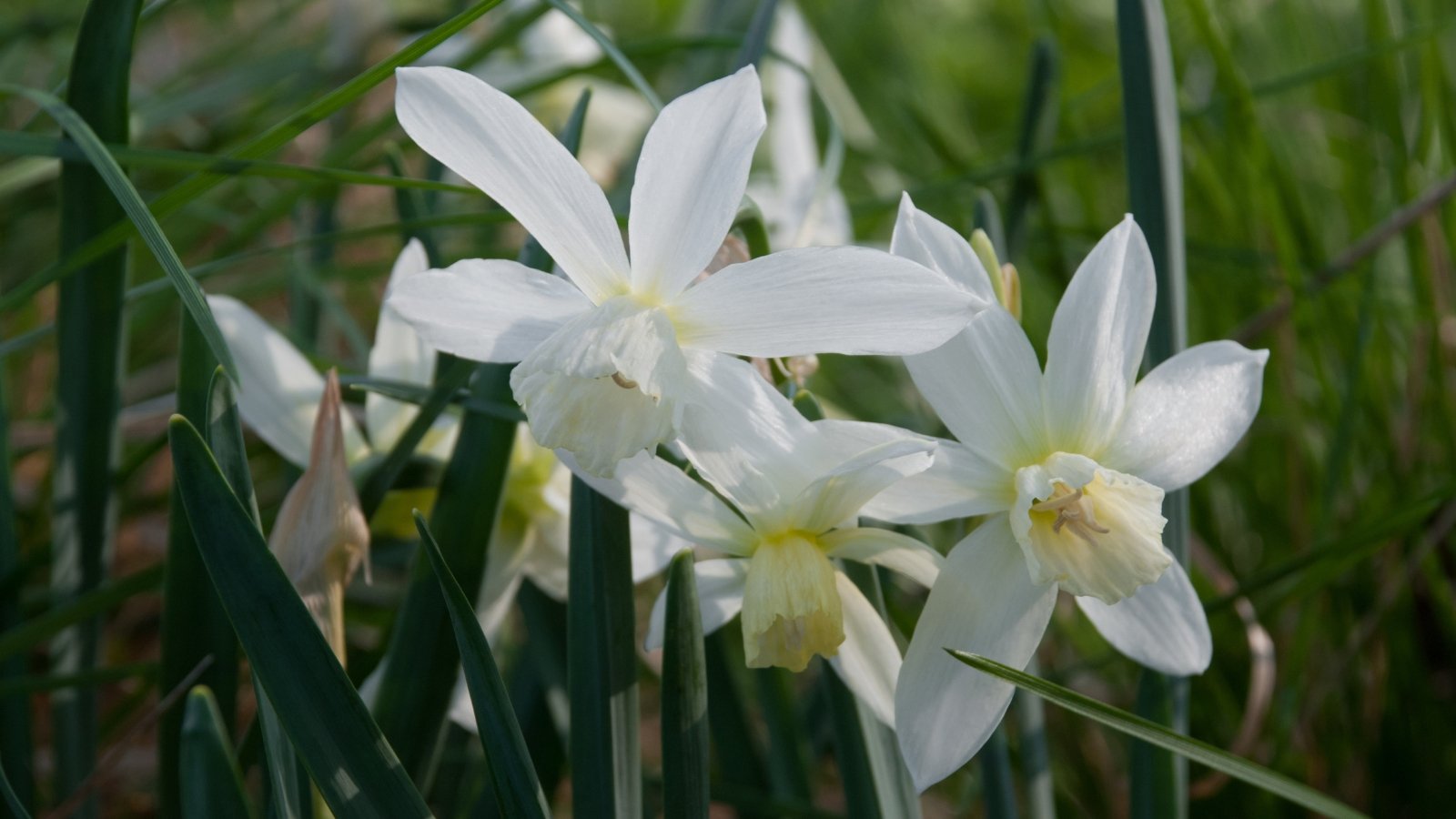
A wild species native to rocky, semi-wooded areas across Europe, Narcissus triandrus is known for their swept-back petals and nodding flowerheads. Cultivar ‘Thalia’ is an elegant, pure white daffodil with a sweet fragrance. Narrow, grass-like stems are blue-green.
‘Thalia’ can be nestled into rock and alpine gardens, provided it gets plenty of water during hot stretches. Blooming in mid to late spring, this daffodil would also be the perfect complement to Virginia bluebells.
‘Trepolo’
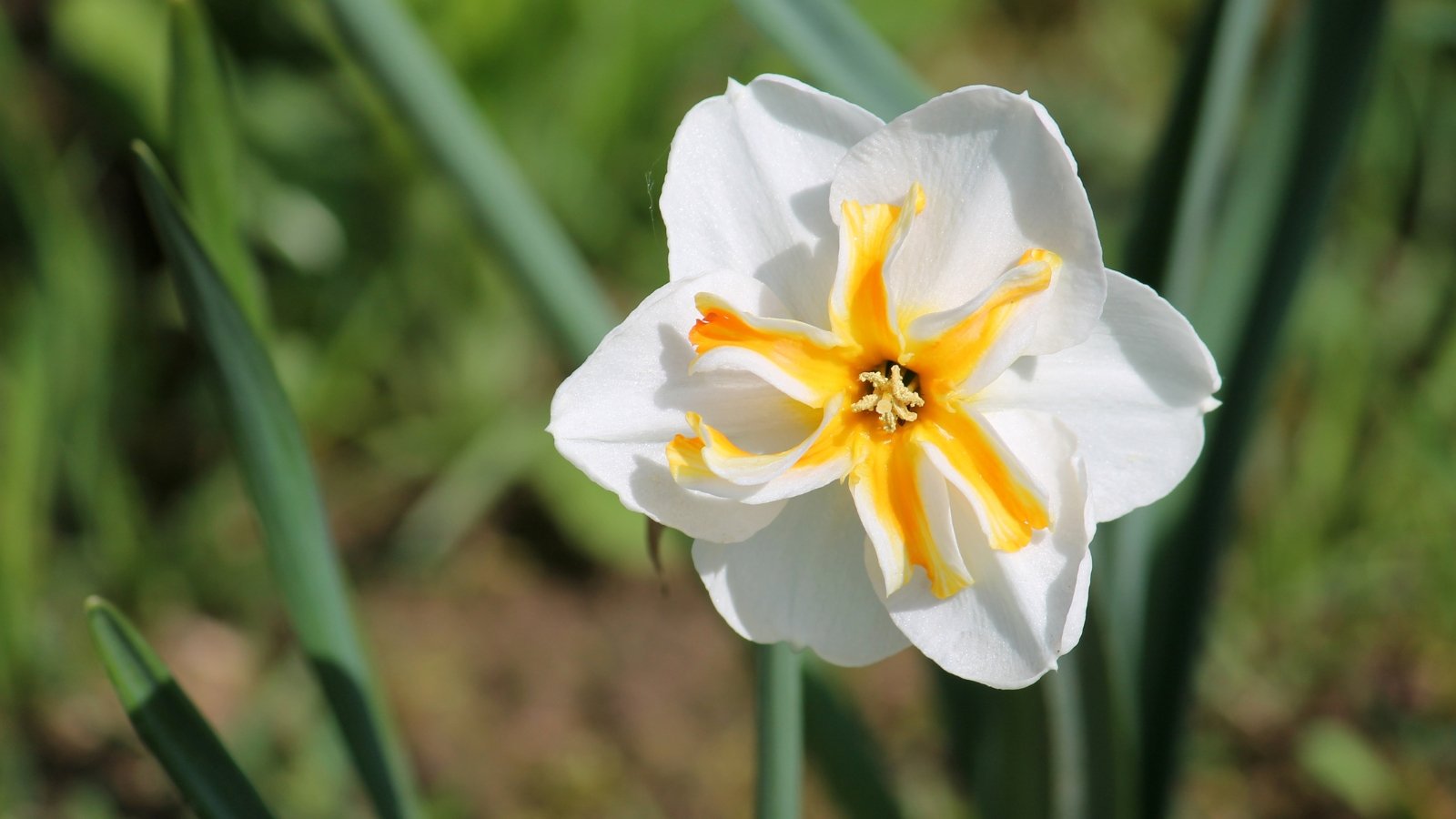
So rarely do you see a patterned daffodil in the garden! ‘Trepolo’ features whimsical stripes that almost look painted on. The petals of the split inner corona are slightly twisted and feature a bold stripe of orange down each one. The outer petals are clear white. This unusual daffodil is slightly fragrant and blooms in mid spring.
‘White Medal’
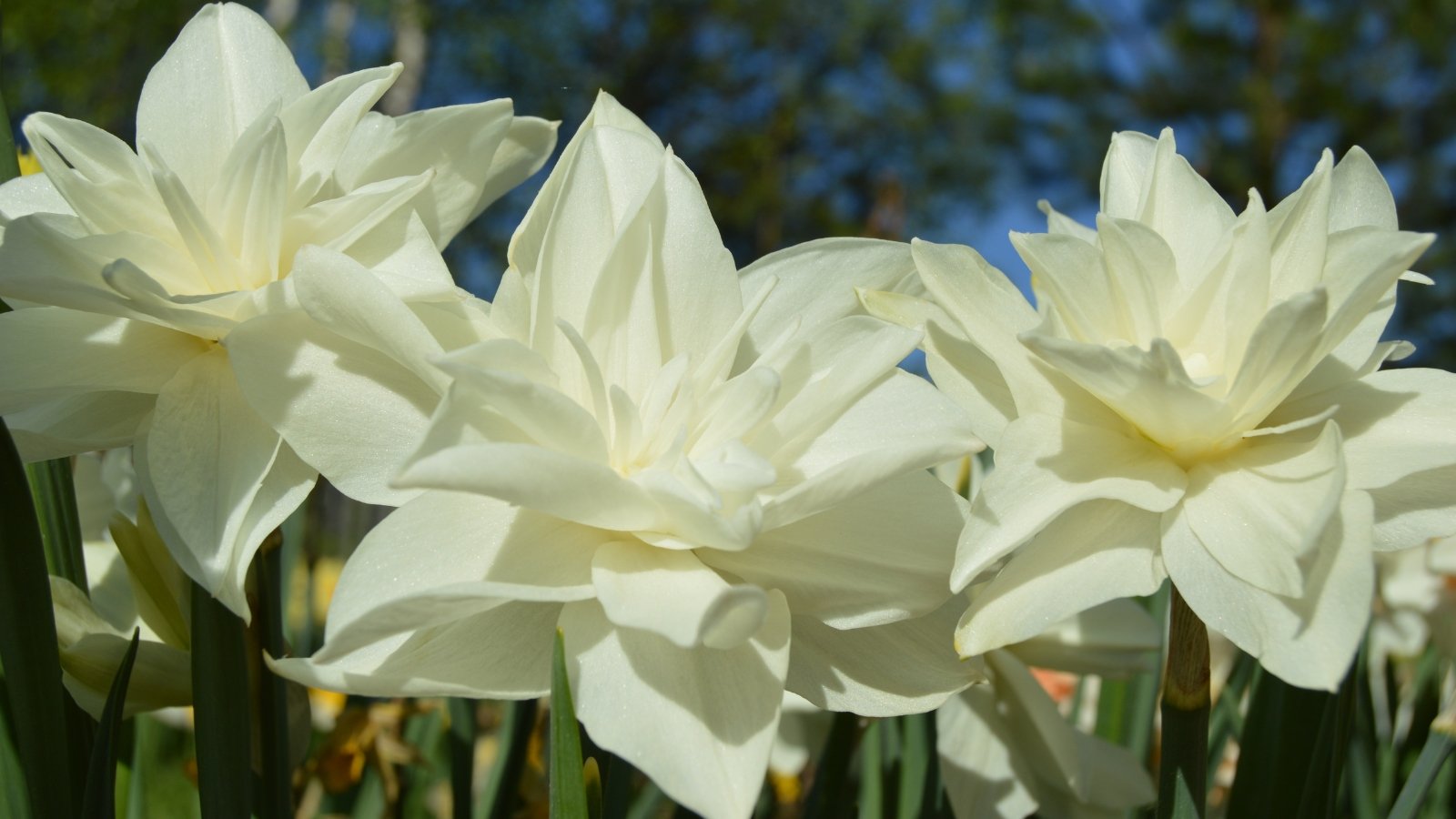
The lush, 4.5-inch wide flowers of ‘White Medal’ make this a must-have daffodil, especially for floral designers. Tall stems and pure white, double-flowering blooms make this an incredibly elegant cut flower. ‘White Medal’ blooms in late spring and naturalizes freely. Try this daffodil as a mass planting under a spring flowering tree, like a redbud or cherry.
‘White Petticoat’
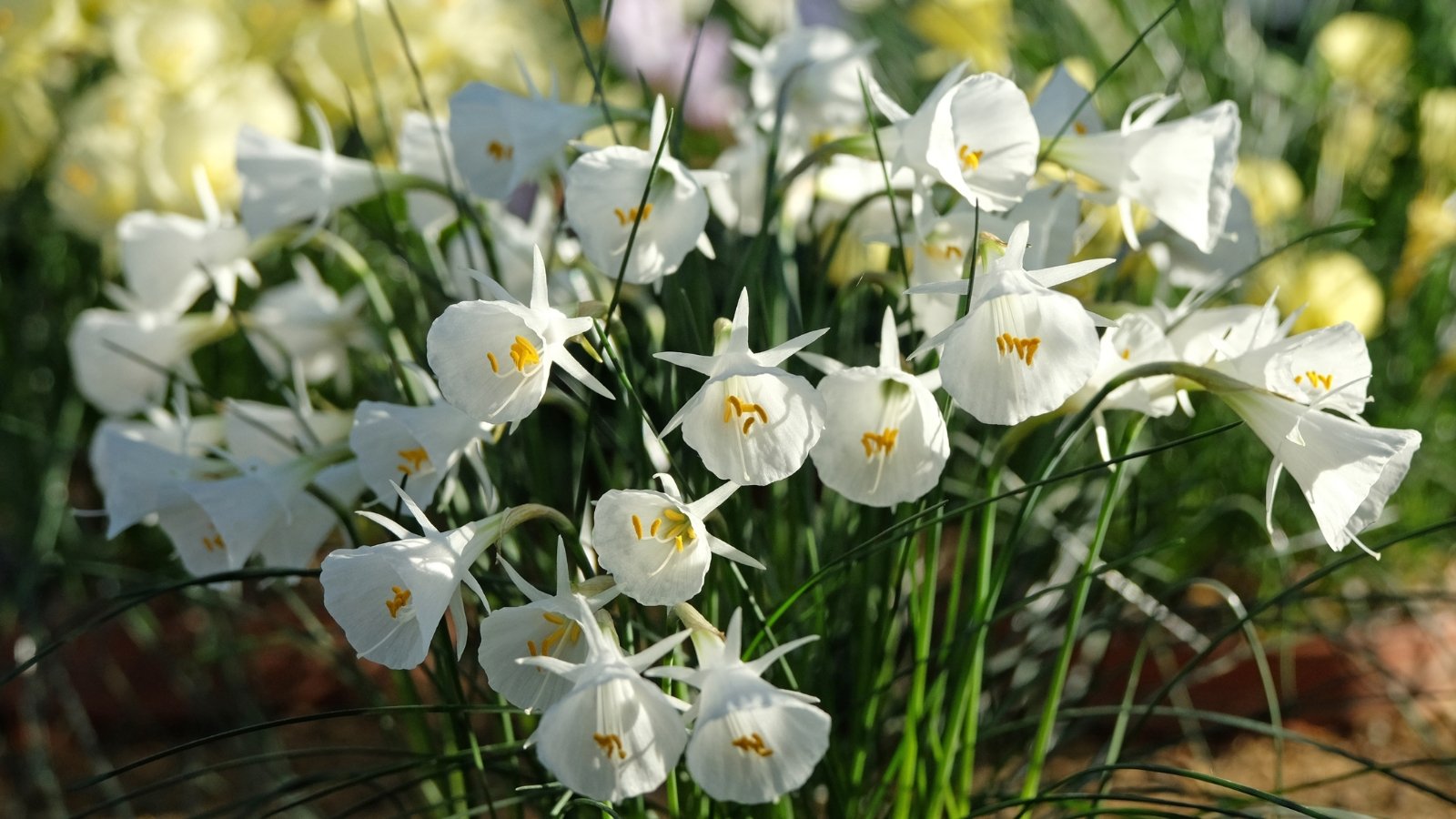
A cousin of the previously mentioned Narcissus romieuxii, Narcissus bulbocodium is native to the meadows and rocky hillsides of southwestern Europe. ‘White Petticoat’ features the same bell-shaped flowers and paper-thing petals as ‘Julia Jane’, however this variety is a creamy white. ‘White Petticoat’ stands no higher than 10 inches tall and blooms in early and mid spring.




